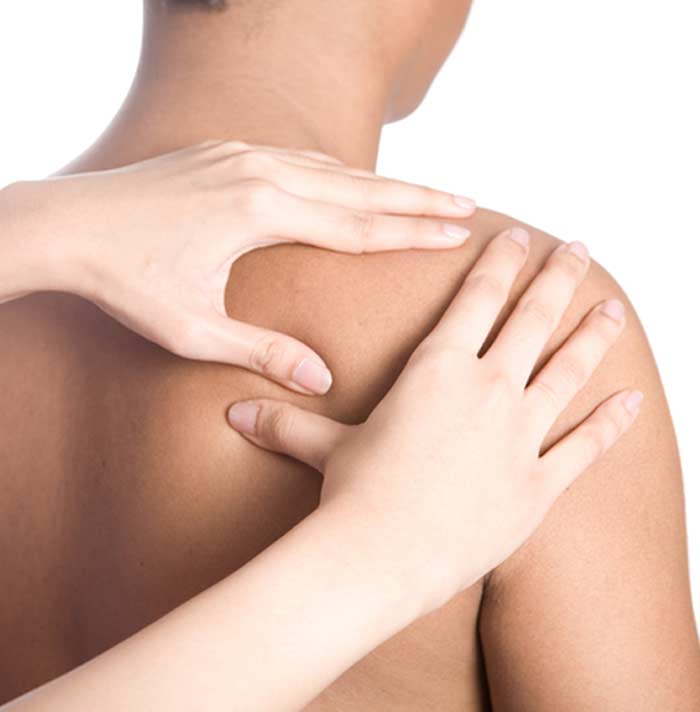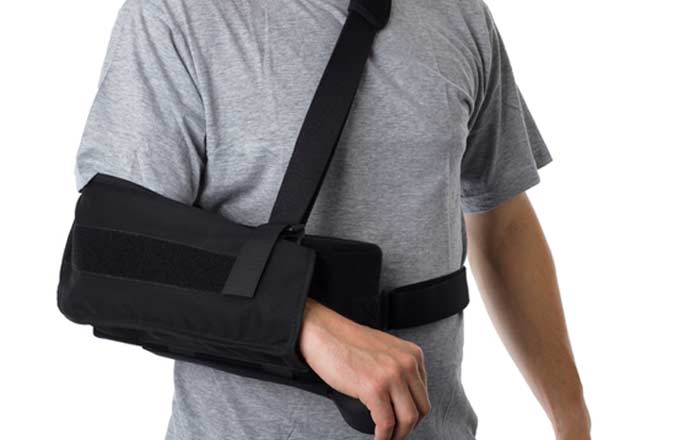

Millions of people experience pain and disability from a torn rotator cuff each year.
The rotator cuff is a group of muscles and tendons that is responsible for holding the upper arm bone in place within the shoulder joint. The shoulder is a ball-and-socket joint and without the rotator cuff, the arm would easily slip out. The rotator cuff also helps stabilize, lift, and rotate the arm.
Sometimes these tendons become frayed or even severed, resulting in a rotator cuff tear. An acute tear may occur after a fall, accident, or injury. More commonly, degenerative changes happen over time. In this instance, the tendons gradually begin fraying and wearing down. Tears are either partial or full-thickness.
Individuals who have repetitive arm movements such as carpenters, painters, and baseball players are at increased risk for a torn rotator cuff. People over forty years of age are also at risk due to degenerative changes in the shoulder joint.
Signs and Symptoms
Shoulder pain, often described as a dull ache, is one common symptom of a torn rotator cuff. Often, the pain increases during certain activities such as lifting overhead, reaching behind the back, or raising the arm parallel to the floor. Along with pain, the shoulder may become weaker; as a result, activities of daily living such as getting dressed may becoming challenging and uncomfortable. Even sleep is disrupted in severe cases. A cracking or popping sound may also be noted. Sudden, sharp, severe pain in the shoulder following an accident or injury may be indicative of an acute tear in the rotator cuff.


Diagnosis and Treatment
A pinched nerve in the neck or arthritis can produce similar symptoms, so a detailed medical history and physical examination is necessary to determine the source of pain. During the exam, the practitioner will look for tender spots and deformities in the shoulder area. Also, raising and lowering the arms in various ways will help identify where the source of pain is located. X-rays may be needed to look for bone spurs in the shoulder, which are often responsible for fraying and wearing down the rotator cuff tendons. MRIs and ultrasounds are helpful to visualize tendons and muscles in the area and determine the extent of the injury.
If a tear is present, unless it was from an acute injury, non-surgical interventions are implemented first. Without treatment, permanent weakness, immobility, or arthritis could result. Heat and cold therapy, physical therapy, and rest is key to regaining strength, reducing pain and improving mobility. Non-steroidal anti-inflammatory medications (NSAIDs) like Ibuprofen or steroid injections to the shoulder may also be necessary. Approximately 80 percent of cases will resolve with these non-surgical interventions.
Surgery might be necessary if:
- Symptoms last longer than six months
- The tear is large and full-thickness
- There is profound weakness and loss of function
- The tear was due to an acute injury
There are three main surgical options to repair a torn rotator cuff. The traditional open repair involves a large, open incision. This is the most invasive form of surgery and is reserved for more complex scenarios. Arthroscopic repair is minimally-invasive; in this procedure, a lighted scope and tiny surgical instruments are inserted through small, puncture-like incisions. Arthroscopy is generally an outpatient procedure with faster recovery and healing.
Finally, a mini-open repair uses a combination of traditional surgery and arthroscopy. The overall goal of each procedure is to reduce pain and improve mobility.
